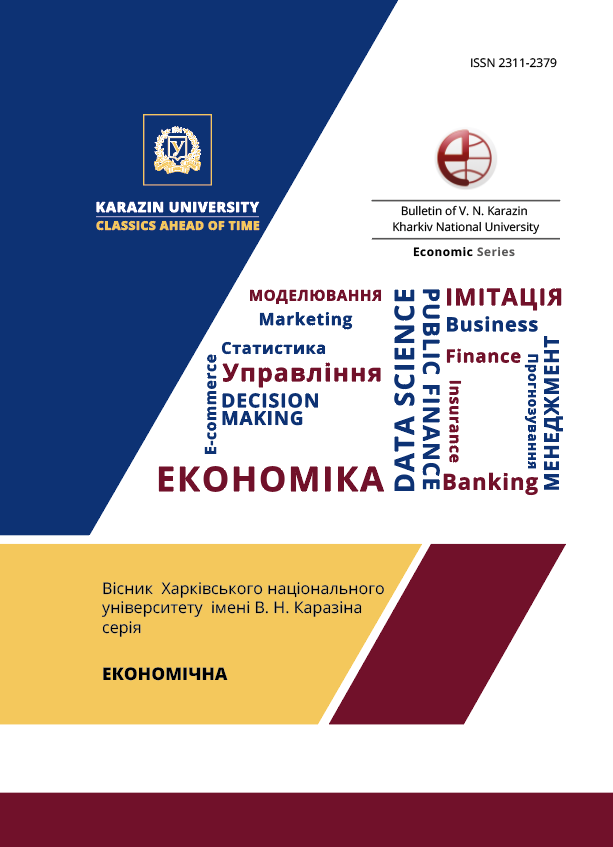Social conscious investment: analysis of the impact of COVID-19 based on ETF
Abstract
The paper examines the risk-return ratio of the ESG ETF as a basis for developing an investment strategy that has become necessary due to the shock caused by the COVID-19 pandemic. ESG Investing is taking into account environmental, sociological and governance factors along with financial factors when making investment decisions. ETF Investing means an index fund whose shares are traded on an exchange. Research has shown that almost 75% of respondents around the world integrate ESG and ETF into their investment approach. The ESG segment demonstrates an increase in investment attractiveness mainly due to the assumption of sustainability. Therefore, the hypothesis of stability in the shock period was a prerequisite for our study. One of the methods used was comparative analysis. Different approaches to risk assessment helped to analyze each group along with the expected return. Among the basic concepts of measuring financial risks in the theory of expected utility, the concept of variability, the concept of sensitivity and the concept of losses in adverse situations, the study focuses on identifying variability and assessing losses in adverse situations. The results were evaluated and compared before and after the shock. This paper also studied a pair of indicators characterizing the shock period, namely the depth of shock and the level of recovery to assess the risk-return ratio directly in the shock period. The results showed differences in risk assessments. The main overall consequence is that ESG ETFs are likely to be affected by shocks, but in the post-shock period there is a fairly rapid recovery. Applying risk-return analysis methodologies, we came to the following conclusions: ETFs show an increase in risks, the pandemic did not change catastrophically, which contributed to a rapid recovery. The study has shown that the dynamics of the risk-return ratio for investments with high implementation of the principle of E, S, G is growing. The results obtained can be applied in the practice of forming portfolio investment strategies.
Downloads
References
Altig, D., Baker, S., Barrero, J. M., Bloom, N., Bunn, P., Chen, S., & Thwaites, G. (2020). Economic uncertainty before and during the COVID-19 pandemic. Journal of Public Economics, 191. doi: https://doi.org/10.1016/j.jpubeco.2020.104274.
Baker, S. R., Bloom, N., Davis, S. J., & Terry, S. J. (2020). Covid-induced economic uncertainty (No. w26983). National Bureau of Economic Research, 26983. doi: https://doi.org/10.3386/w26983.
Girard, M. (2020). The 5 shapes of coronavirus economic recovery – wich will it be. Retrieved from https://ci.natwest.com/insights/articles/the-5-shapes-of-coronavirus-economic-recovery-and-why-our-base-case-is-a-swoosh/.
Guryanova, L., Yatsenko, R., Dubrovina, N., Babenko, V., & Gvozditskyi, V. (2021). Machine learning methods and models, predictive analytics and applications: development trends in the post-crisis syndrome caused by COVID-19. CEUR Workshop Proceedings, 2927, 1-7.
Just, M., & Echaust, K. (2020). Stock market returns, volatility, correlation and liquidity during the COVID-19 crisis: Evidence from the Markov switching approach. Finance Research Letters, 37. doi: https://doi.org/10.1016/j.frl.2020.101775.
Narayan, M. (2020). 3 key investment trends for a post-COVID world. Retrieved from https://www.refinitiv.com/perspectives/future-of-investing-trading/3-key-investment-trends-for-a-post-covid-world.
TKB investment. (2019). Three whales. Why ESG investments are taking over the world by leaps and bounds. TKB investment journal. Retrieved from https://journal.tkbip.ru/2019/04/10/esg-2/.
Niemoller, J. (2021). Sustainability vs ESG: What's the Difference, and Why Does It Matter? Retrieved from http://www.perillon.com/blog/sustainability-vs-esg.
Drenik, G. (Dec 22, 2020). The Acceleration of ESG investing in a post-pandemic market. Forbes. Retrieved from https://www.forbes.com/sites/garydrenik/2020/12/22/the-acceleration-of-esg-investing-in-a-post-pandemic-market/?sh=64d44b0d12fa.
Rubbaniy, G., Khalid, A. A., Ali, S., & Naveed, M. (2021). Are ESG stocks safe-haven during COVID-19? Studies in Economics and Finance. doi: http://dx.doi.org/10.2139/ssrn.3779430.
Kanuri, S. (2020). Risk and return characteristics of environmental, social, and governance (ESG) equity ETFs. The Journal of Index Investing, 11(2), 66-75. doi: https://doi.org/10.3905/jii.2020.1.092.
Cardenas, M. A. U. R. I. C. I. O., Ayala, J. J. G., & Hernandez-Aguilera, J. H. (2020). Boosting ESG finance for the Post-COVID19 world. Commentary. Center for Global Energy Policy. SIPA-Columbia University. Energypolicy. Columbia. Retrieved from https://energypolicy.columbia.edu/sites/default/files/file-uploads/BoostingESGFinancePost-COVID_CGEP_Commentary_042220-3.pdf.
Omura, A., Roca, E., & Nakai, M. (2020). Does responsible investing pay during economic downturns: Evidence from the COVID-19 pandemic. Finance Research Letters, 42. doi: https://doi.org/10.1016/j.frl.2020.101914.
Ferriani, F., Natoli, F. (2020). ESG risks in times of COVID-19. Applied Economics Letters, 28(18), 1537-1541. https://doi.org/10.1080/13504851.2020.1830932.
Folger-Laronde, Z., Pashang, S., Feor, L., & El Alfy, A. (2020). ESG ratings and financial performance of exchange-traded funds during the COVID-19 pandemic. Journal of Sustainable Finance & Investment, 1-7. doi: https://doi.org/10.1080/20430795.2020.1782814.
Pavlova, I., & de Boyrie, M. E. (2021). ESG ETFs and the COVID-19 stock market crash of 2020: Did clean funds fare better? Finance Research Letters, 102051. doi: https://doi.org/10.1016/j.frl.2021.102051.
Kaminskyi, A., Nehrey, M., Rizun, N. (2020). The impact of COVID-induced shock on the risk-return correspondence of agricultural ETFs. Machine Learning for Prediction of Emergent Economy Dynamics 2020. Proceedings of the Selected Papers of the Special Edition of International Conference on Monitoring, Modeling & Management of Emergent Economy (M3E2-MLPEED 2020), 2713, 204-218.
ETF database. (2021). Retrieved from https://etfdb.com/.
Investing.com. (2021). Retrieved from https://www.investing.com.
Szegö, G. P. (Ed.). (2004). Risk measures for the 21st century. New York:Wiley.
Kaminskyi, A., Nehrey, M. (2021). Passing through COVID-19 financial shock by Artificial Intelligence ETFs: changes in risk-return correspondence. / Models of system analysis in the management of economic processes - Bratislava-Kharkiv, Higher School of Economics - KhNEU im. S. Kuznets.

